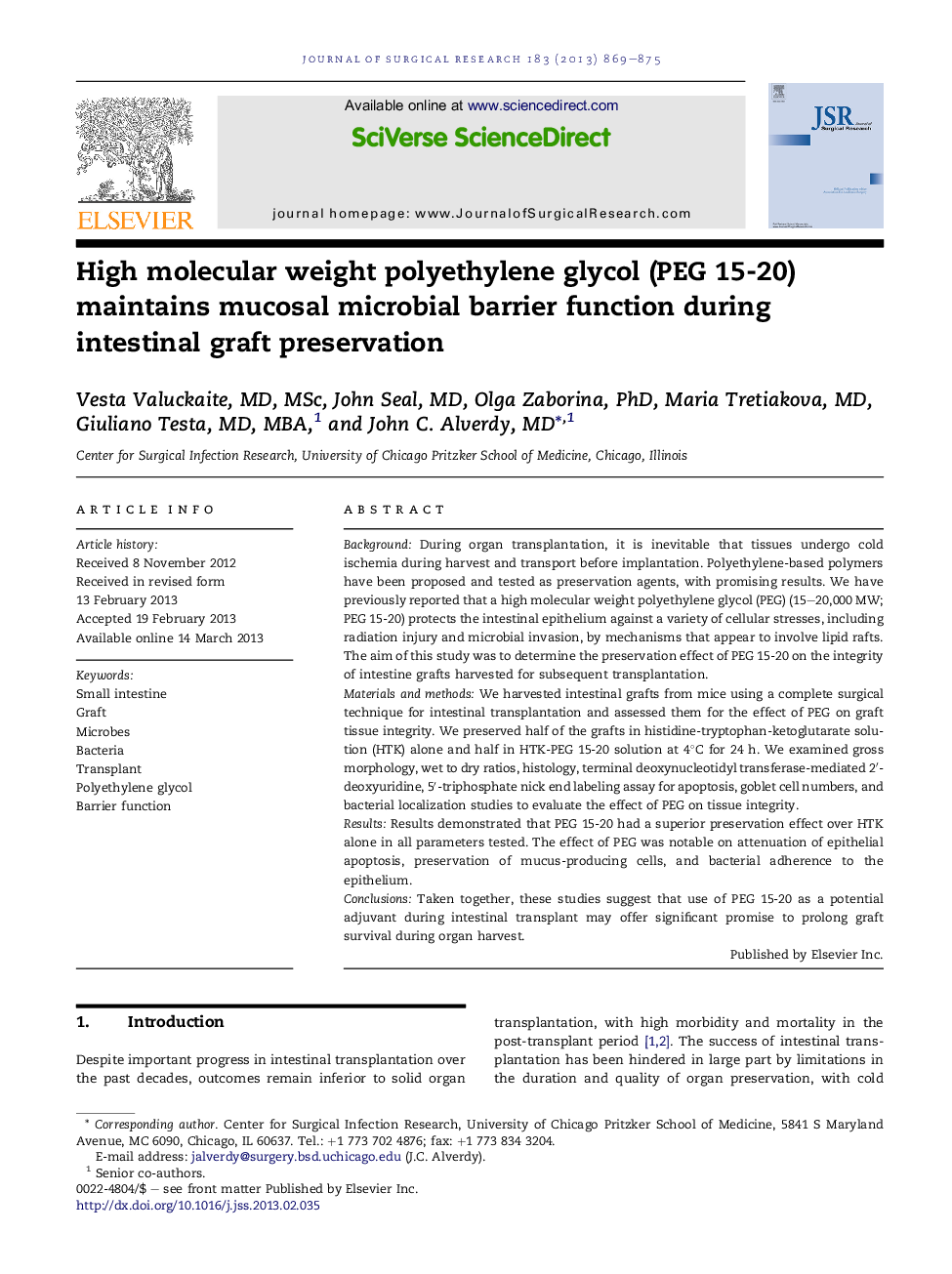| کد مقاله | کد نشریه | سال انتشار | مقاله انگلیسی | نسخه تمام متن |
|---|---|---|---|---|
| 4300904 | 1288426 | 2013 | 7 صفحه PDF | دانلود رایگان |

BackgroundDuring organ transplantation, it is inevitable that tissues undergo cold ischemia during harvest and transport before implantation. Polyethylene-based polymers have been proposed and tested as preservation agents, with promising results. We have previously reported that a high molecular weight polyethylene glycol (PEG) (15–20,000 MW; PEG 15-20) protects the intestinal epithelium against a variety of cellular stresses, including radiation injury and microbial invasion, by mechanisms that appear to involve lipid rafts. The aim of this study was to determine the preservation effect of PEG 15-20 on the integrity of intestine grafts harvested for subsequent transplantation.Materials and methodsWe harvested intestinal grafts from mice using a complete surgical technique for intestinal transplantation and assessed them for the effect of PEG on graft tissue integrity. We preserved half of the grafts in histidine-tryptophan-ketoglutarate solution (HTK) alone and half in HTK-PEG 15-20 solution at 4°C for 24 h. We examined gross morphology, wet to dry ratios, histology, terminal deoxynucleotidyl transferase-mediated 2′-deoxyuridine, 5′-triphosphate nick end labeling assay for apoptosis, goblet cell numbers, and bacterial localization studies to evaluate the effect of PEG on tissue integrity.ResultsResults demonstrated that PEG 15-20 had a superior preservation effect over HTK alone in all parameters tested. The effect of PEG was notable on attenuation of epithelial apoptosis, preservation of mucus-producing cells, and bacterial adherence to the epithelium.ConclusionsTaken together, these studies suggest that use of PEG 15-20 as a potential adjuvant during intestinal transplant may offer significant promise to prolong graft survival during organ harvest.
Journal: Journal of Surgical Research - Volume 183, Issue 2, August 2013, Pages 869–875